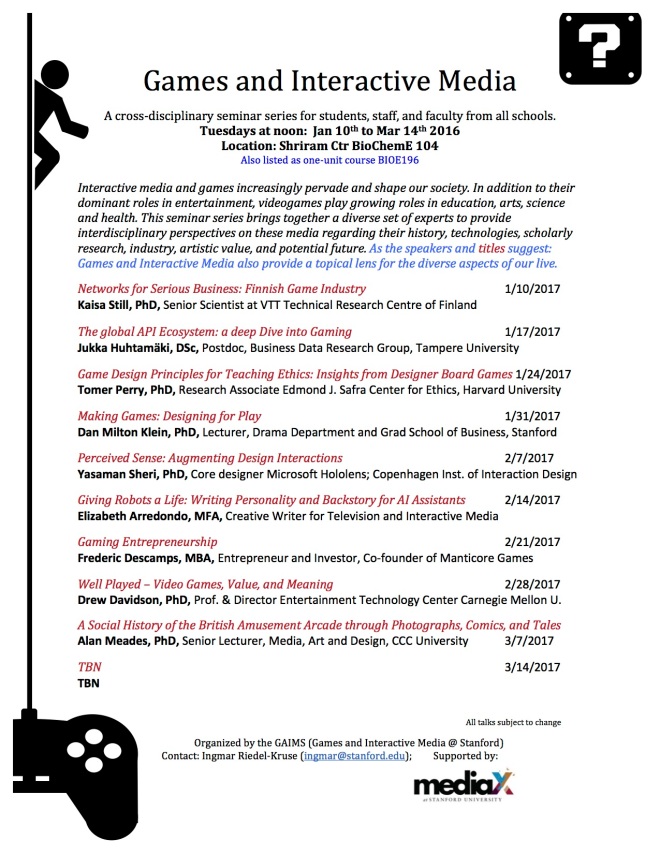
On February 19, 2020 (10:30-12:00 in Oshman Hall), Morgane A. Ghilardi from the University of Zurich will be giving a guest lecture in the context of my “Digital and Interactive Media” course:
Electronic Bodies, Real Selves: Agency, Identification, and Dissonance in Video Games
Vivian Sobchack asserts that technology affects the way we see ourselves and, as a consequence, the way we make sense of ourselves. She also points to a crisis of the lived body that is to be attributed to the loss of “material integrity and moral gravity.” What are we to do with such an an assertion in 2020? Digital media that afford us agency in some form or other––specifically, video games––engender a special relationship between our ‘IRL’ selves and the “electronic” bodies on screen in the formation of what I call the player-character subject. Transgressive acts––such as violent acts––that take place within the system of a game––either in terms of fiction or simulation––bring the unique affective dimensions of that relationship to the fore and prompt us to reflect on ways to make sense of our selves at the intersection of real and simulated bodies.
